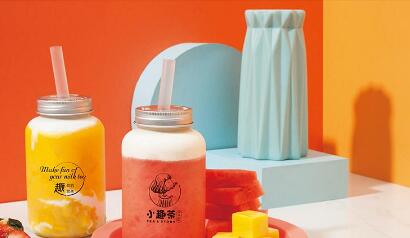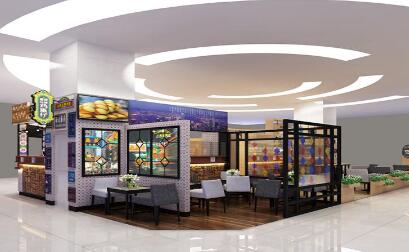‘贝博bb平台体育全站版’特斯拉超级电池工厂可能未投产已过时
本文摘要:A disruptive shadow looms over Tesla Motors’ giantNevada “gigafactory”—the threat of rapidly advancing battery technology. While plenty of hurdles face new battery tech, the emergence of a viable and significantly better battery in the next five years could turn Tesla’s $5 billion facility for mass producing lithium-ion batteries into a giga-albatross.面临电池技术很快发展带给的威胁,特斯拉设于内华达州的超级电池工厂(Gigafactory)弥漫在一片阴云之中。
A disruptive shadow looms over Tesla Motors’ giantNevada “gigafactory”—the threat of rapidly advancing battery technology. While plenty of hurdles face new battery tech, the emergence of a viable and significantly better battery in the next five years could turn Tesla’s $5 billion facility for mass producing lithium-ion batteries into a giga-albatross.面临电池技术很快发展带给的威胁,特斯拉设于内华达州的超级电池工厂(Gigafactory)弥漫在一片阴云之中。尽管新技术面对诸多障碍,但如果在五年内经常出现既简单又远好于现有产品的电池,特斯拉耗资50亿美元新建的建锂离子聚合物电池工厂就有可能变为极大开销。
In January, Fuji Pigment Co. Ltd. (not affiliated with Fujifilm) announced that it had made a significant breakthrough in aluminum-air battery technology. Aluminium-air batteries have a theoretical capacity morethan 40 times greater than the lithium-ion cells Tesla will soon mass-produce, and Fuji Pigment has stated it will commercialize its innovation by the end of 2015. This means that the gigafactory’s products could already be outclassed before its target 2016 opening—and long before the estimated 7-10 years of full production it could take to recoup the factory’s costs.今年1月份,富士色素株式会社(并非富士子公司)宣告,已在铝空气电池技术上获得重大突破。与特斯拉将要量产的锂凝电池比起,铝空气电池理论容量多出40倍以上。而且富士色素回应,将在今年底前构建项目商业化。这意味著,订于2016年投产的特斯拉超级电池工厂有可能从一开始就正处于领先方位,该厂预计还必须7-10年才能超过设计生产能力并交还成本。
Battery innovation takes place within a rigid structure: every battery has two ‘sides,’ the cathode and anode, which react through an electrolyte medium to produce power. Analuminum-air battery generates electricity from the reaction of oxygen and aluminum, using water as an electrolyte. A standard aluminium-air reaction consumes the aluminum anode, which must be physically replaced rather than electrically recharged. But Fuji Pigment claims that, by adding strategically placed layers of ceramic and carbon, it has managed to suppress corrosion and reaction byproducts, creating an aluminium-air battery that can be recharged multiple times by simply adding water.电池领域的创意遵循的规律大致相同:电池都有阴极和阳极,靠阴阳近于之间的电解质再次发生反应产生电流。铝空气电池以水为电解质,通过氧气和铝的反应产生电流。
标准的铝-空气反应不会消耗铝阳极,因此必需更换阳极,并无法非常简单电池了事。富士色素回应,通过在关键方位摆放陶瓷和碳精片隔层,才可诱导生锈和副产品,这样铝空气电池只需煮沸就能多次电池。
Dr. Mark Hersam, professor of materials science and engineering at Northwestern University, says that it would be “stunning” if Fuji Pigment hit their target for commercialization. Among other unaddressed issues, he points out that aluminium-air batteries physically contract as they discharge, which can lead to fracturing and make them difficult to integrate into fault-intolerant automotive systems.美国西北大学材料科学和工程学教授马克o赫尔萨姆认为,如果富士色素真为能已完成铝空气电池的商业化,“十分真是”。不过他指出还有一些问题没解决问题,比如铝空气电池的体积在用于过程中不会增大,有可能经常出现裂痕,因此很难构建到无法容错的汽车系统中。In an email, Ryohei Mori, Fuji Pigment’s lead researcher on the aluminium-air project, sounded a slightly more cautious note than the company’s January press release. “We are still at developing stage, and maybe in the near future . . . we can work together with large scale.”在一封电子邮件中,富士色素铝空气电池项目首席研究员森亮平的态度就显得慎重,不形似公司1月公告中那般悲观。
他写到:“我们仍正处于开发阶段,或许近期内有可能大规模生产。”But Fuji Pigment is not the only company working on a better battery. Israel’s Phinergy is also pursuing the aluminium-air dream, while American startups Pathionand Sakti 3 are looking at an even more radical innovation—solid-state batteries that replace liquid electrolytes with ceramic or crystal. Sakti 3 has successfully demoed a battery that produces 1,000 watt-hours of energy per liter of battery volume, which in practice could more than double the driving range of a current Tesla. Pathion CEO Michael Liddle projects that solid-state battery technology will be market-ready within two years.不过,苦心钻研先进设备电池技术的并不只有富士色素一家。以色列公司Phinergy也在找寻铝空气电池梦。美国初创企业PathionandSakti 3则侧重更加保守的创意,他们的点子是用陶瓷或水晶替换液态电解质,生产固态电池;该公司已顺利展出了一种新的电池,能量密度为每升至1000瓦时,一旦落成可将特斯拉的行经里程增加一倍以上。
PathionandSakti 3首席执行官迈克尔o利德尔预计,固态电池技术可在两年内投放市场。Of course, the main point of the gigafactory is not to produce cutting-edge batteries, but to produce existing tech on a scale that will bring costs down—Tesla hopes to sell an electric sedan for $35,000. But in this regard, too, both aluminium-air and solid-state batteries have a potential edge. Aluminum is far cheaper than lithium, and solid-state batteries could be ‘printed’ like computer chips, a much more efficient process than the layering and rolling of metal and gel that produces lithium-ion batteries.当然,特斯拉的电池工厂主要任务不是生产最先进设备的电池,而是使用现有技术并通过量产来降低成本。特斯拉理想的电动车售价为3.5万美元。在降低成本方面,铝空气电池和固态电池都有潜在优势。
铝比锂低廉得多,固态电池则可以像计算机芯片一样“压制”出来,相比锂聚电池生产所需的金属分层和轧制工艺效率高多了。According to Dan Radomski, vice president for industry and venture development at the consulting firmNextEnergy, it would be very difficult for Tesla to pivot in response to these innovations. “It’s not too much different from us going from VHS to disc. It changes the entire supply chain.”据咨询公司NextEnergy负责管理工业及创意发展的副总裁丹o拉多姆斯基讲解,对特斯拉来说,针对新的经常出现的创意调整十分艰难,“这就和从盒式录像带改向光盘差不多,不会转变整个供应链。
”The demands of the automotive sector may buy Tesla some time. Cars are subject to high and low temperatures that have a significant impact on battery performance, and the standard for safety is understandably high. While lithium-ion batteries have shown some problems in responding to high temperatures, decades of testing have gone into gaining it acceptance for use in cars.不过,汽车行业的市场需求或许能为特斯拉谋求一些时间。高温和低温对电池性能影响相当大,适当的安全性标准当然也很严苛。虽然锂聚电池在高温环境下有些问题,但经历了几十年的考验后在汽车上用于早已问题并不大。Tesla will also likely have some options for upgrading the gigafactory’s lithium-ion products. Researchers atNangyang Technological University have developed a fast-charging titanium dioxide anode, and Mark Hersam’s team at Northwestern has doubled the capacity of a lithium-ion anode by interlacing materials like graphene. Though cathode advances have trailed, integrating new materialswould not require a wholesale overhaul of the gigafactory’slithium-ion production process.特斯拉也可以自由选择改良超级电池工厂的锂凝电池。
新加坡南洋理工大学的研究人员早已研发出可较慢电池的二氧化钛阳极;马克o赫尔萨姆教授在西北大学的团队则通过重新加入石墨烯等材料,将锂凝电池阳极的俱电子能力提升了一倍。尽管阴极方面早已领先,但特斯拉统合新材料应当不必完全革新锂聚电池生产工艺。Ultimately, the biggest question mark for the gigafactory’slong-term viability are less technological than strategic. An innovation in a lab is not the same as a working product, and Pathion’s Michael Liddle says that the piecemeal nature of battery research has limited real-world advances. Many startups and researchers can produce a better cathode, anode, or electrolyte, but all three must work together perfectly to make a battery. The capital to bring the pieces together, and bring production of new batteries to scale, has been scarce.说到底,特斯拉的电池工厂长年维继的仅次于问题在于战略,而不是技术。
却是,实验室里的创意和简单产品不是一其实。正如PathionandSakti 3首席执行官迈克尔o利德尔所言,电池研究正处于“零敲碎打”状态,实际前进受限。许多初创公司和研究人员都可以生产出有更佳的阴极、阳极或者电解质,但三者得极致融合才能沦为电池。仍然以来,很少有资金用在融合三者并大规模量产新的电池方面。
But that’s likely to change with major manufacturers likeCadillac and BMW moving more aggressively into electrics. With range an ever more vital competitive point, increasing amounts of capital will be chasing the next big battery (GM is a major investor in Sakti 3). That could push the rate of change beyond what even Tesla CEO Elon Musk could have foreseen.随着凯迪拉克和宝马等主要汽车厂商更加大力拓展电动汽车市场,局面有可能转变。电池技术已是关键竞争点,花上在新一代主流电池上的资金也大大激增(通用汽车就是PathionandSakti 3的主要投资者之一)。
电池领域于是以飞速革新,未来很可能会多达特斯拉CEO埃隆o穆斯克的想象。
本文关键词:BB贝博艾弗森官方网站,艾弗森贝博ballbet官网,ballBET贝博BB艾弗森下载,贝博bb平台体育全站版
本文来源:BB贝博艾弗森官方网站-www.jiabinsport.com
推荐资讯
- 阿里巴巴向硅谷推出云服务 正面PK亚马逊2024-12-26
- “BB贝博艾弗森官方网站”多名美英UFO2024-12-25
- 九成老板用Facebook筛应聘者-BB2024-12-24
- 纳米技术打造微型机器人微型仪器游进人体做2024-12-23
- 或将改变PC理论架构?浅析Intel的傲2024-12-23
- 支付宝将在欧洲扩张业务|ballBET贝2024-12-23
- 氮肥残留土壤数十年渗污地下水_ballB2024-12-22
- PCB电路板散热技巧_ballBET贝博2024-12-22
- ‘贝博bb平台体育全站版’特斯拉超级电池2024-12-22
- 艾弗森贝博ballbet官网-日本疫情将2024-12-17
餐饮项目推荐
- 加盟指南
- 经营技巧
- 餐饮营销
- 政策萌动企业抢滩 储能行业“微风渐起”【
- 镍市供给侧改革全面展开:艾弗森贝博bal
- 新疆有色集团住村工作组倾情帮扶暖民心“贝
- 葛红林为有色离退休干部作经济形势报告【B
- 铜市等待新一轮补库驱动:艾弗森贝博bal
- 《壮丽70年 奋斗新时代》栏目征稿启事“
- 贝博bb平台体育全站版:四家有色基地入围
- BB贝博艾弗森官方网站:2018年全球精
- 贝博bb平台体育全站版:“中国身影”闪亮
- 贝博bb平台体育全站版:全国减轻企业负担


























我要加盟(留言后专人第一时间快速对接)
已有 1826 企业通过我们找到了合作项目